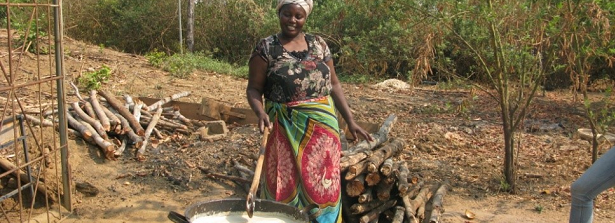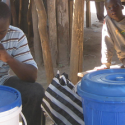Consumer perspective on traditional fermented maize drinks

This Master thesis “Risk assessment of the production of the Zambian fermented maize drinks Munkoyo and Chibwantu” is written by Ivana Mik, project member of the Global Challenges Programme project on traditional fermented foods in Zambia. The Master thesis shows that consumers feel that these drinks are safe and very attractive.
Summary
A risk assessment was made of the fermented maize-based drinks munkoyo and chibwantu from Zambia. This assessment comprises three parts: the resilience against and presence of selected pathogens in the product , a review of possibly present toxic compounds in the product and the perception of consumers and producers on the safety of the product. The resilience of the microbial community in munkoyo against invasion of selected pathogens was tested over four days of fermentation at 25 °C and during storage in the finished product at 4 °C. The product did not show to be resilient; however the number of S. aureus and B. cereus reduced by 0.8 log CFU/ml and 2.9 log CFU/ml respectively over fermentation. 4 of 5 pathogens reduced between 0.5 and 2.11 log CFU/ml during the period of storage. When tested, samples that were taken in Zambia revealed that 15 out of 16 samples were contaminated with S. aureus, B. cereus or Enterobacteriaceae. All samples contaminated with S. aureus contained the m minimal infective dose for enterotoxin production. For B. cereus only half of the samples contained the infective dose. However, for all samples a low pH was probably reached rapidly during fermentation, making it unlikely for the organisms to cause any adverse effects in form of toxin production. The samples from Zambia were analyzed using HPLC on their ethanol, sugar and acid content. Ethanol could be found in all samples tested, with 5 out of 16 samples even passing the amount that is considered “non-alcoholic” (<0.5 % v/v) . Furthermore lactic acid was found in all samples. Acetic acid, formic acid and citric acid were found in some of the samples. Furthermore glucose, maltose, sucrose, mannitol and fructose were found in varying concentrations. The majority of consumers do not associate any risks with munkoyo/chibwantu. Gaining trust is important when marketing the product by being transparent about the production and product. Bigger scale producers can gain trust by using transparent bottles, by allowing people to visit the production site and by keeping a social media page in which the process is shown and consumers can ask questions. The most reported symptoms of illness after consumption of the product are related to food poisoning and intoxication and comprise abdominal cramps, diarrhea and vomiting.>(<0.5 % v/v) . Furthermore lactic acid was found in all samples. Acetic acid, formic acid and citric acid were found in some of the samples. Furthermore glucose, maltose, sucrose, mannitol and fructose were found in varying concentrations.
The majority of consumers do not associate any risks with munkoyo/chibwantu. Gaining trust is important when marketing the product by being transparent about the production and product. Bigger scale producers can gain trust by using transparent bottles, by allowing people to visit the production site and by keeping a social media page in which the process is shown and consumers can ask questions. The most reported symptoms of illness after consumption of the product are related to food poisoning and intoxication and comprise abdominal cramps, diarrhea and vomiting.
Several measures or actions are already taken by producers to ensure a safe production. However there is a lot of room for improvement that can already be implemented at the household scale of production. The most important measure is the necessity to cool down the maize gruel more rapidly. Furthermore manual contact with the product after cooking should be avoided at all costs. Water that is used for cleaning or producing should always be heat treated or purified in another way, especially if it will be added to the product after the heating and fermentation steps. A test should be developed to ensure that the right munkoyo root is used.






